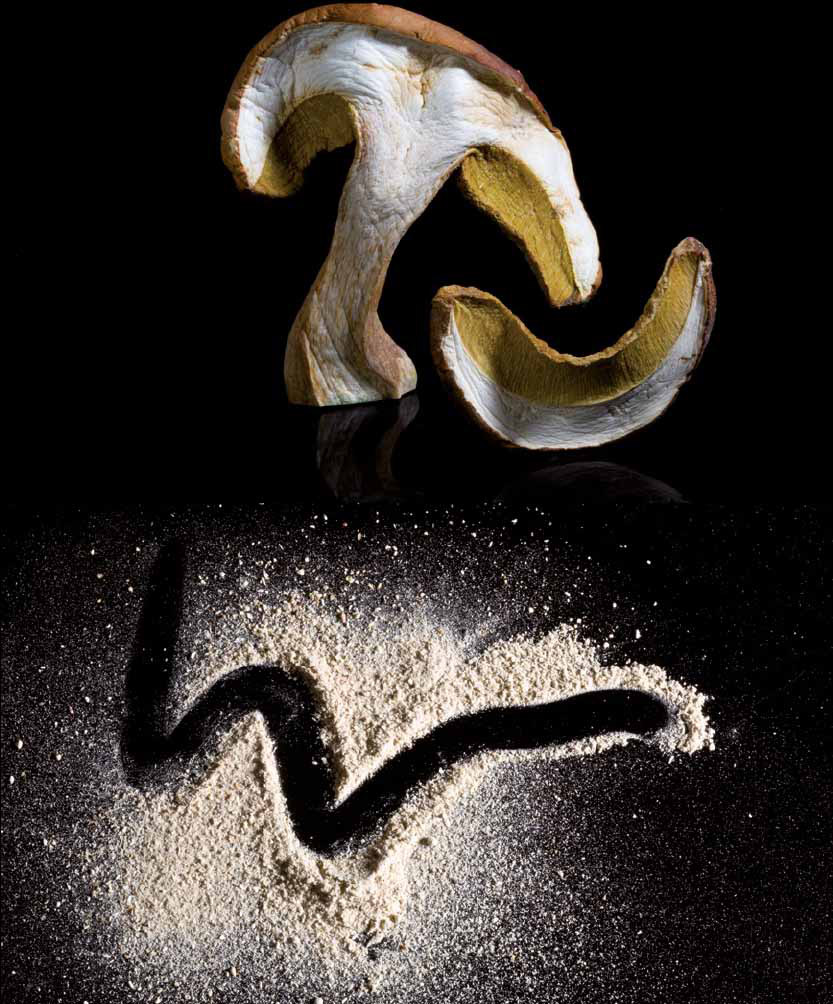
We have repeated ad nauseam that drying was one of the first methods used for food conservation, taking advantage of periods of abundance to keep reserves for times of scarcity.
Various drying methods have been discussed elsewhere in this work, but I believe it is worth pausing over something we use extensively, no longer for food conservation, but to give taste and lift to a sauce or main dish.
It’s traditional to use dried foods, crushed very finely to powder, especially spices.
Paprika is obtained by very finely crushing dried red peppers. To look at other cultures, far away but increasingly becoming near, wasabi is powder made from the dried root of Japanese horseradish, or garam masala, typical in India, is a powder made from crushing different spices. In these foods, crushed when dried, with the water removed, the flavour is greatly concentrated, as is the aroma when the powder is kept tightly closed in appropriate containers.
Years ago, the Navarre chef Jesús Sánchez, in his Cantabrian restaurant El Cenador de Amós, in a star dish that is still on the menu (Fillet of Cod Roasted with Mushroom Flour and a Light Beef Gravy) ‘breaded’ the spine of the fish with a powder, which is nothing but dried and powdered mushrooms.
In our establishment, both in our research and daily cooking, different powders are increasingly used to flavour vinaigrettes as wells as sauces, and also to sprinkle on top, providing colour, aroma and taste. Not only is this mere aesthetics, which of course it is, but it also affects the depth of taste. For example, one of our first dishes using a powdered product – a deconstruction of traditional Basque cuisine – was: ‘Hake in Green Sauce and Vinaigrette of Clams Sautéed with Ham Powder’. An important flavourful contrast for so delicate a fish as hake. Not only with the marine elements (clam vinaigrette) but also with the powdered ham.
There are other powders: of vinegar, wine, black olives, tea, tomato, ginger, not to mention the classic cocoa or different spices and dried herbs.
Our menu also had a dish of oysters with powdered almonds. And a San Pedro or Muxu Martin fish, accompanied by an hibiscus sauce, garnished with a powder of cheese bark and ham with cinnamon.
The vinegar powder we used is the same as the one that is added to sushi (therefore, a Japanese product), sold ready-made in specialist shops (especially for oriental cookery) and its function is to fix the flavour, and we have enough evidence of this (some sweet meringues were made too sweet), while, unlike liquid vinegar, it does not easily curdle when in contact with cream, egg yolks, beaten egg whites or dairy. It can also acidify biscuits or reinforce acidity, as a contrast to fatty fish.
